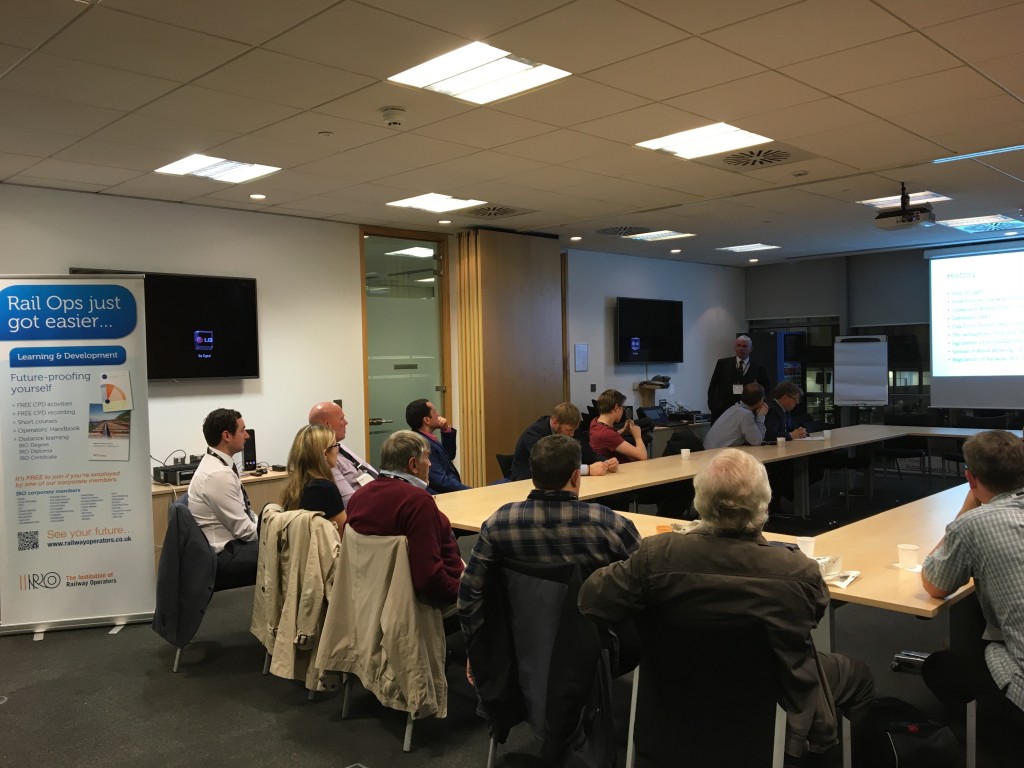A presentation to the North West and Wales Area in Manchester on Thursday 12 November 2015
 North West and Wales Area members were privileged to receive a presentation by Phil Graham, recently retired from Network Rail, on the ‘Principles of Signalling’. During the illustrated talk, it was self-evident that Phil was not only a master of his brief from a theoretical and planning perspective but that he was also very much a hands-on senior manager. Indeed, until his last days on the railway, Phil enjoyed occasional shifts working his local mechanical signal boxes in the Knaresborough and Harrogate area.
North West and Wales Area members were privileged to receive a presentation by Phil Graham, recently retired from Network Rail, on the ‘Principles of Signalling’. During the illustrated talk, it was self-evident that Phil was not only a master of his brief from a theoretical and planning perspective but that he was also very much a hands-on senior manager. Indeed, until his last days on the railway, Phil enjoyed occasional shifts working his local mechanical signal boxes in the Knaresborough and Harrogate area.
Phil covered the evolution of signalling from the early rudimentary ‘time interval’ arrangements through to the present day. Electric telegraph, ‘block’ signalling, and track circuiting were innovations introduced as time progressed, but the many signal boxes (some 12,000 at the Grouping in 1923, which had reduced to about 10,000 by nationalisation in 1948) indicated the then very labour-intensive nature of operating a railway to contemporary standards of safety.
Turning to the present day, the number of staffed signalling installations has reduced to fewer than 700, which includes traditional mechanical facilities alongside those utilising a number of phases of much more recent technology. Ongoing rationalisation proceeds apace, towards the objective of perhaps as few as only 12 ‘boxes’ or ROCs (as the Rail Operating Centres are known in current parlance) to cover the entire network. To bring us up to date, reference was made to ERTMS/ETCS: the latest European standard.
The actual signals themselves have moved on in stages from oil lit semaphores to LED displays, fibre optics having quickly been overtaken by subsequent developments. During the presentation, various interesting items related to signalling (including staffs/tokens for single line working) were passed around for scrutiny, and Phil competently answered questions from the floor. A well deserved vote of thanks was given by Chris Jones-Bridger, those present showing their appreciation in the conventional manner.
That is, however, not the end of the story. Appetites having been been whetted, our ‘Family Day Out’ on Saturday 9 July 2016 will be to York. A practical operating session on the National Railway Museum’s ‘Lancashire & Yorkshire Railway’ signalling training layout (dating from 1913) has been generously made available to us by Phil and his volunteer colleagues at the NRM. An offer not to be refused, surely, and we are certainly looking forward to it!
By David Armstrong

Contact us